The Big Picture

Based on the novel by Jane Harper, the feature The Dry stars Eric Bana as Aaron Falk, an Australian Federal Police agent who returns to his rural hometown following an apparent murder-suicide involving an erstwhile friend. As he’s pulled into the investigation, connections emerge to another mystery from Falk’s and the town’s past, and old wounds open anew.
The Dry opened on Jan. 1 in Australia, only in cinemas, and has been met with critical acclaim and tremendous box-office success. "We shot it in large format on the DXL2 camera with these beautiful Panavision lenses," says director Robert Connolly, who also served as co-writer and a producer. "I want people to have to engage with it in the cinema."
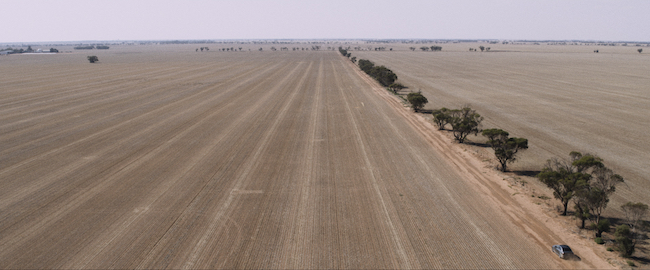
Cinematographer Stefan Duscio, ACS was behind the camera for The Dry. Connolly and Duscio first crossed paths on the 17-part compendium film The Turning, which Connolly produced and two segments of which, “Long, Clear View” and “Small Mercies,” Duscio shot. They then partnered as director and cinematographer for the four-part miniseries Barracuda. “I had an awesome time working with Rob on Barracuda,” Duscio reflects. “It was a very auteur, director-driven drama, which is rare in TV.”
Principal photography on The Dry took place entirely on location, with 34 shooting days spread over seven weeks at the tail end of the Australian summer in 2019. "We were prepping in January and February and then shooting March and April," Duscio recalls. "It was not quite as stifling as the height of the summer, but the landscapes still looked really bleached out."
When Panavision caught up with Connolly and Duscio in mid-January, the director was in the midst of preproduction for his next feature, Blueback, with cinematographer Andrew Commis. Once again, Connolly will be working in large format with Panavision’s Millennium DXL2. “I absolutely love the format,” the director enthuses, “and I’m excited to take it even further into the future.”

Director Robert Connolly.
Panavision: There are two mysteries in the film, one about the apparent murder-suicide in the present, and the other about a death in the past. How did you seek to distinguish those two time periods visually?
Robert Connolly: For the film, I wanted the audience to have absolute and utter clarity about whether we were in the past or the present. If you think back to moments in your own past, the way you remember them is rarely complete. Memory isn’t locked-down in the same way as the present. The pieces of the past are depicted in the film as a jigsaw puzzle that comes together in a different aesthetic than the way the present does.
Stefan and I worked on a visual strategy that depicted the present as having very muscular, beautiful camera moves and compositions; the camera's got more weight in it. We did use Steadicam, but there is some beautiful tracking work that Stef did where you feel the camera is moving with the character in a way that's planted in the world. Whereas the past, in contrast, could be lighter and more handheld, with less of a shot-reverse-shot aesthetic.

Stefan Duscio, ACS: Rob mentioned that in the old days he might have shot 16mm for the past and 35mm for the present, and I realized the DXL2 would be really sympathetic to that because it’s very simple to change formats and lenses on that camera. So we shot the past on C Series anamorphic lenses, which have beautiful aberrations and are soft on the edges, and the present was shot on large-format Primo Artiste lenses, which feel both classic and modern, with more detail. The past was looser, handheld, improvised, so we were happy to use lenses that weren’t as ‘perfect,’ but for the present, we wanted it to feel a bit cleaner and more precise, like Eric’s character. To be able to swap and change between those lenses on another camera system would have been complicated, but on the DXL2, it was simple.
We also worked with LiveGrain to simulate a 16mm grain for the past and a very subtle 35mm grain for the present, and we applied that to the dailies, so Rob and editorial would only look at colored, textured work. With DIT Christopher Reig, we created a LUT for the past, a LUT for the present, and we occasionally used the DXL2's built-in Light Iron Color 2 Film LUT. I selected one per scene, and after we wrapped shooting for the day, Christopher and I would finesse the color in a controlled space.
That, on top of the different lens formats, helped place you immediately in the past or the present - as well as so many other decisions we made. We weren't trying to be subtle about those differences. We endeavored to put a lot of green in the past, whereas I don't think we had any green at all in the present. We really wanted you to go, 'This landscape has been devastated by drought.'
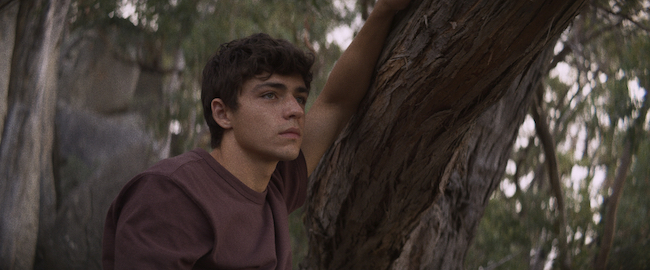
Where did you shoot The Dry?
Connolly: There’s always this pressure to shoot within the vicinity of a big city, but there’s a point about four hours out of Melbourne, into regional Australia, where the landscape changes in such an extraordinary way. We made the decision to take the film out there and film in the real world of our story. That subsequently opened a complexity of how we would find the locations. I think we spent 90 percent of the time in pre driving around, location scouting.
Duscio: Our first week of shooting was predominantly flashbacks, which were set in a time when the landscape was lusher and greener. So that was an area which had more forests and river, about an hour and a half north out of Melbourne. And then we traveled another three or four hours north, where it’s very dry, and that’s where the contemporary scenes of the film were shot.
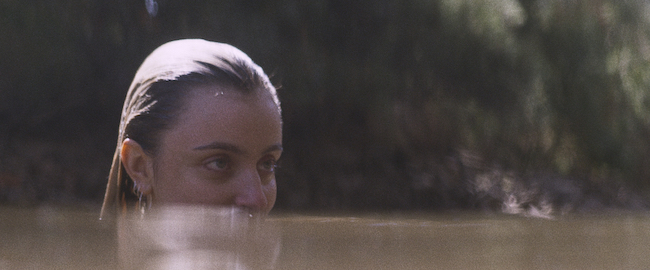
Were there any locations you used for both the past and the present?
Connolly: There were a few, so for the past, they had to be dressed by the greens unit to feel lush and vegetated. The past had to feel like a different color palette. And then we had to shoot in that same location, dry and bleak and ravaged by 20 years of global warming. We also had to find location that could interlock in a way that people wouldn’t question. One of the key images in the film is Eric Bana standing in a completely dry riverbed and remembering swimming there as a young 17-year-old, when the river was full of water.
We took a lot of time to look at the photos we had taken while scouting, and in this big room in an office we had in Melbourne for some of our pre, we created this incredible array of images stuck on the walls. Stef brought in an amazing photographic printer so we had tactile images rather than only digital ones. You could almost feel the film, the color palette, the journey the film would take you on between the past and the present. We worked throughout preproduction surrounded by these images - we even did our read-throughs in there - so the images infused themselves into the creative vision of everyone involved.
Duscio: I think it's important for the team to be looking at beautifully shot and printed reference images. I wanted all of us to be inspired while in that preproduction brainstorm. I cropped everything to our 2.40:1 shooting ratio, and we organized the images by location and inspiration. Some sections were practically titled, like 'Hadler Farm,' while others were more evocative, like 'Drought,' and also included photojournalist images of drought-ridden landscapes. I encouraged our production designer and costume designer to both add to it so we could all be very aware of the shared palette. There was no mystery about what the film was going to look like.
That also helps communicate to production what's important. It even helps the line producer to look at a wall like that and go, 'Okay, I can see why you need a drone team on this film - look at how well it paints the landscape.' Whereas if they just see that as a line item on a spreadsheet, it's not as strong an argument.
What drew you to large format? What made it appropriate for this story?
Connolly: There are lots of reasons why The Dry was perfect to shoot in large format. To talk more philosophically before we talk creatively, if you can watch great stuff on your TV or laptop or phone or whatever, how do you then make people go to the cinema? The future for me is these heightened cinematic experiences beyond any scale you could watch at home. Our work has to demand that people have to see it in the cinema.
Duscio: I’m an avid stills photographer. I shoot a lot of large-format stills, and I’ve always hungered for large-format motion-picture experiences because of the depth and detail and contrast — the images feel more dimensional. So I was really excited when Panavision announced the DXL. Rob and Eric had a demo in 2018, the year before we shot the film, and then I separately had a demo, and I think we were all equally blown away by the potential of the format. After that, I shot a couple of commercials on it, shot camera tests on it, and I was just hunting for a feature project to work with it on.

Cinematographer Stefan Duscio, ACS.
Connolly: We talked a lot about having an aesthetic, even in the edit, that allowed the audience, in a large-format experience in the cinema, to look around the frame and see the detail and take in the world without forcing the moment with cutting, and to have a different rhythm than what television is now. There are beautiful compositions within The Dry that you can look into for a long time. I want the audience to see the detail. And we have a genre film here where there are clues in these images as well.
I really love big, wide compositions set against extremely tight compositions. There are some beautiful scenes that are in mid shots, but my instinct is always to be wider or tighter, and I think this camera works equally well, in a very exciting way, in both of those compositions.
Duscio: When we were on the Primo Artistes, I loved it because I could shoot Eric on a 40mm, but it would have the field of view of something like a 30mm in the 35mm format. So I’d be able to shoot him in a mid-shot and still see so much of the landscape because of large format. It hits such a sweet spot where you get that proximity to the actor, you feel the camera’s close to them and you’ve got a wide field of view, but you’ve still got a softness to the depth of field if you want it. We shot so much of the film in that 40 or 50mm range on people, and then when we got onto landscapes, we were in the 27mm range.
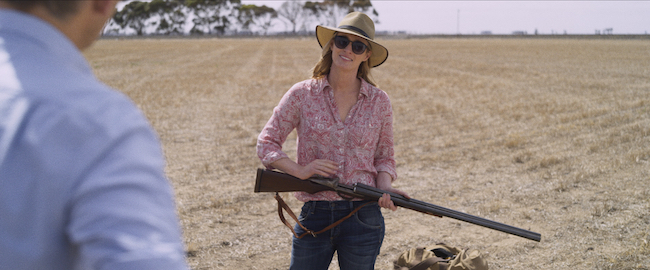
Were there particular focal lengths you tended to favor with the C Series?
Duscio: Again we were probably on the 40 or 50mm a lot because it felt like such a sweet size for the kids. Occasionally we used a 75mm for closer work, but the 40mm range definitely afforded us more flexibility in blocking and improvising handheld work. I recall shooting the C Series around T4, and the Primo Artistes around T2.8.
Were you mostly working with one or multiple cameras?
Duscio: We were always single camera for the flashbacks because that was a very improvised style where coverage might be 270 degrees. We wanted to give maximum freedom to the actors and Rob to block a scene. When we got into more classic coverage in the contemporary scenes, we still were probably single camera 80 percent of the time. For a dramatic two-hander where Rob and the cast wouldn’t want to do too many repeats, we would utilize a second camera, so one of us would be on a two-shot and one of us would be on a close-up at the same time. That camera operator was Justin Besser, who was also our Steadicam operator throughout the shoot, and whom we also sent off to shoot landscapes. He was a bit of a triple threat for us!
Did your 1st AC take advantage of the DXL2’s FIZ modules and the Primo Artistes’ internal motors?
Duscio: First AC Chris Child absolutely took advantage of the FIZ module. I found this part of the DXL2 system so exciting — it really streamlines the camera package. Particularly for handheld work, having less on the camera makes it lighter and easier to handle. Ergonomics are so important, and you can feel Panavision know this, given their long history in designing cameras. The DXL2 has a big, comfortable shoulder mount, and a huge top handle for low-angle work. I was able to move around very quickly with the director and cast.
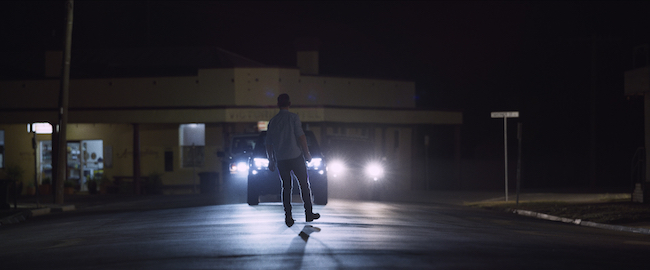
How did the DXL2’s native 1600 ISO impact your lighting?
Duscio: It meant that for all our night scenes, whether interiors or exteriors, I was able to light with a much more subtle brush and in a much more naturalistic way. I’m thinking of a scene with Eric Bana and Genevieve O’Reilly in her lounge room, where they’re lit by practical lamps. It’s soft and warm, and we didn’t have to have anything huge in there to carry that. We just had very small units within the room that didn’t take up a lot of space. I love operating in those levels, and I think the actors and Rob can feel the difference with that because everything’s a lot more subtle.
Connolly: So true. The actors are in places that feel more naturalistic in the lighting. They’re able to inhabit it and be in character and not feel like it’s brighter because it needs to be for the sensor.
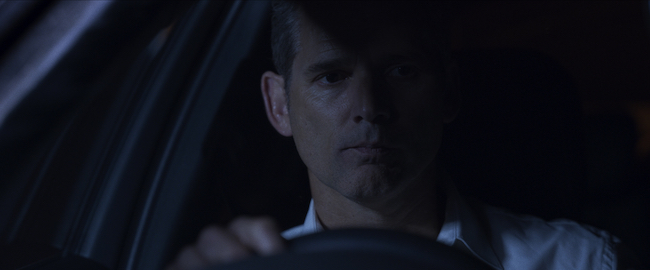
At its core, this story is about Eric Bana's character coming home. Going back to what you said earlier about the effort that went into finding where you would shoot, this is a movie that's very much about its locations.
Connolly: That’s exactly right. We were filming in a world that is very much going through what the town in this film is going through. You’d be crazy not to try and capture that in the DNA of the film. And certainly having actors in the real world helps the performance. When Eric Bana gets out of his air-conditioned car and walks into this landscape, and it’s really hot, that’s exactly what’s happening!
I do love the adventure of being a filmmaker and going into new places and worlds with people from there. Stefan and I shared a house in a town called Warracknabeal, and we'd be driving to set in the morning as the sun was rising, feeling the landscape warming up and the incredible color across the sky as the world awakes - it's spectacular. You can't help but get affected by that. Stef and I both grew up in the bush, and when you see the film, Stefan's eye for that world is just so accurate.
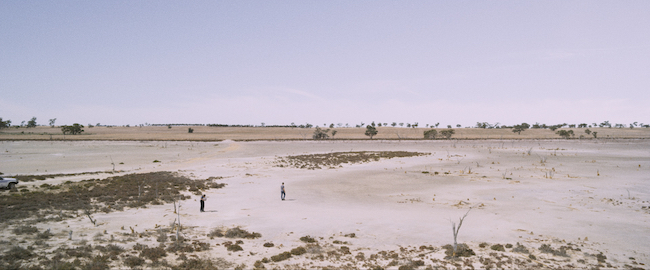
All images courtesy of the filmmakers.